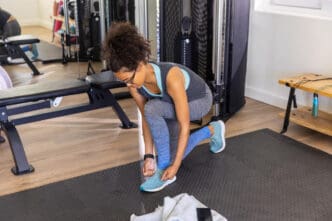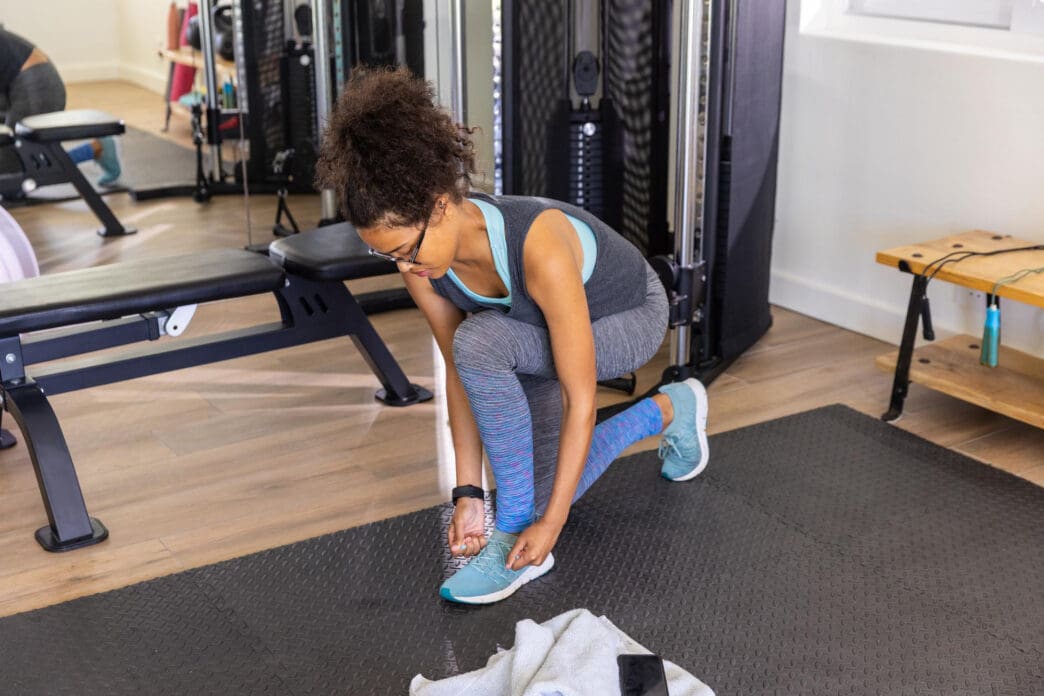A Quick Takeaway
- “Working in” new fitness gear is a crucial, gradual process of acclimating both the gear and your body to each other, ensuring optimal performance, comfort, and longevity while preventing injuries.
- The primary benefits of a proper break-in period include enhanced comfort and performance, extending the lifespan of equipment, and critical injury prevention.
- The “working in” process varies by gear type (footwear, apparel, equipment) and requires gradual introduction, paying close attention to your body’s feedback, and avoiding common mistakes like ignoring discomfort.
The Story Behind the Trend
- “Working in” new fitness gear is a crucial, often-overlooked process where both the user and the new athletic equipment gradually acclimate to each other, allowing the gear to conform to the body and movement patterns while the user adapts to its characteristics. This essential break-in period prevents injuries, maximizes comfort and performance, and extends the longevity of various items, from running shoes and compression wear to lifting belts.
How to Make It Work for You
- Properly “working in” new fitness gear is crucial for preventing injuries and discomfort, as it allows the equipment to adapt to your body while you adjust to its unique characteristics. This process not only enhances your performance and comfort during workouts but also significantly extends the lifespan of your athletic apparel and equipment, ultimately maximizing your investment in fitness.
The Community View
- The expert advice presented in the article emphasizes that “working in” new fitness gear is an essential, often overlooked process for ensuring optimal performance, comfort, and longevity while preventing injuries.
- This expert guidance details that users should engage in a gradual acclimation phase, allowing both their bodies and the equipment to adapt to each other, with specific strategies tailored to different gear types like footwear, apparel, and specialized equipment.
- A common, yet misguided, user perspective (addressed as a mistake to avoid) is that new gear is immediately ready for peak performance, often leading to ignored initial discomfort that can result in injury or damage to the equipment.
“Working in” new fitness gear is an often-overlooked but essential process for anyone investing in new athletic apparel or equipment, ensuring optimal performance, comfort, and longevity while preventing potential injuries. This crucial break-in period allows the gear to conform to your body and movement patterns, and for you to adapt to its unique characteristics, ultimately maximizing your investment and enhancing your workout experience. It applies to a wide range of items, from running shoes and compression wear to lifting belts and sports equipment, and should be undertaken gradually before full-intensity use to ensure safety and effectiveness.
What Exactly is “Working In”?
“Working in” refers to the gradual process of acclimating both yourself and your new athletic equipment to each other. It’s about easing into the full potential of your new item, rather than immediately subjecting it, or yourself, to peak performance demands. This period allows materials to soften, stretch, or mold, and for your body to adjust to new sensations, support, or restrictions.
Think of it as a mutual adaptation phase. The gear needs to learn your unique biomechanics, and you need to learn how the gear influences your movement. This careful introduction minimizes the risk of discomfort, blisters, chafing, or even more serious injuries that can arise from unfamiliar or stiff equipment.
Why Bother? The Benefits of a Proper Break-In
The primary benefit of working in new gear is enhanced comfort and performance. When gear fits and moves seamlessly with your body, you can focus entirely on your workout without distraction. This translates to better form, greater efficiency, and ultimately, improved results from your training sessions.
Beyond comfort, a proper break-in significantly extends the lifespan of your equipment. Gradually introducing stress to materials prevents premature wear and tear, allowing the gear to maintain its structural integrity and supportive qualities for longer. Furthermore, it’s a critical step in injury prevention, as ill-fitting or un-adapted gear can alter gait, restrict movement, or create friction points leading to pain and injury.
Gear-Specific Strategies
The “working in” process varies depending on the type of gear. Understanding these specific nuances is key to a successful integration into your routine.
Footwear: Your Foundation
Running shoes, hiking boots, and cross-trainers are perhaps the most critical items to work in. New footwear often feels stiff, and the materials need to soften and mold to the unique contours of your feet. Skipping this step can lead to painful blisters, chafing, and even issues like shin splints or plantar fasciitis due to altered foot mechanics.
Start by wearing new shoes for short periods around the house or during light errands. Progress to short walks, then gentle jogs or low-impact exercises. Gradually increase the duration and intensity of your activities over several days or weeks before tackling a long run or intense workout. Pay close attention to any hot spots or areas of discomfort.
Apparel: Compression, Support, and Movement
While often less rigid than footwear, new athletic apparel, especially compression garments, sports bras, and specialized training outfits, also benefits from a break-in period. Compression wear, for instance, needs to conform to your body’s shape to provide optimal support and blood flow. New fabrics might feel stiff or restrictive initially.
Wear new activewear for shorter, less intense workouts first. This allows the fabric to stretch and adapt to your movements without the added stress of a high-impact session. Ensure sports bras offer adequate support and comfort during light activity before relying on them for vigorous exercise. Check for any chafing or irritation points that might emerge.
Equipment: Belts, Gloves, and More
Items like weightlifting belts, gloves, knee sleeves, and even specialized sports equipment like tennis rackets or golf clubs, have their own break-in requirements. A new lifting belt, for example, will be rigid and needs to soften to properly support your core without digging in uncomfortably. Gloves need to become supple to allow for full dexterity and grip.
For lifting belts, wear them loosely around the house or during warm-ups before gradually tightening them during sets. For gloves, use them during lighter training sessions to allow the material to flex and conform to your hands. With sports equipment, begin with drills or less intense practice sessions to get a feel for the new item before competitive play.
Common Mistakes to Avoid
One of the biggest mistakes is assuming new gear is ready for peak performance right out of the box. Another is ignoring initial discomfort, hoping it will “go away” with continued use. Discomfort is often a warning sign that the gear isn’t properly adapted, or it’s not the right fit for you. Pushing through pain can lead to injury or permanently damage the gear’s integrity.
Avoid washing new items immediately if the manufacturer suggests otherwise for initial wear, as some materials benefit from natural softening. Always consult the care instructions to ensure you’re not inadvertently harming the gear during its break-in phase.
Listening to Your Body: The Ultimate Guide
Ultimately, the most important rule when working in new gear is to listen intently to your body. Every individual’s biomechanics are unique, and what works for one person might not work for another. Pay attention to how the gear feels, noting any pressure points, discomfort, or restricted movement.
If something doesn’t feel right, investigate the cause. It might be a simple adjustment, or it could indicate that the gear isn’t suitable for your body type or activity. Prioritize comfort and function above all else; a well-integrated piece of gear should feel like an extension of yourself, not a hindrance.
Embracing the process of working in new fitness gear is a smart investment in your health, performance, and the longevity of your equipment. By understanding the specific needs of different items and patiently allowing for adaptation, you ensure that every new purchase enhances your fitness journey rather than detracting from it. This mindful approach transforms a simple acquisition into a valuable tool for achieving your wellness goals.







